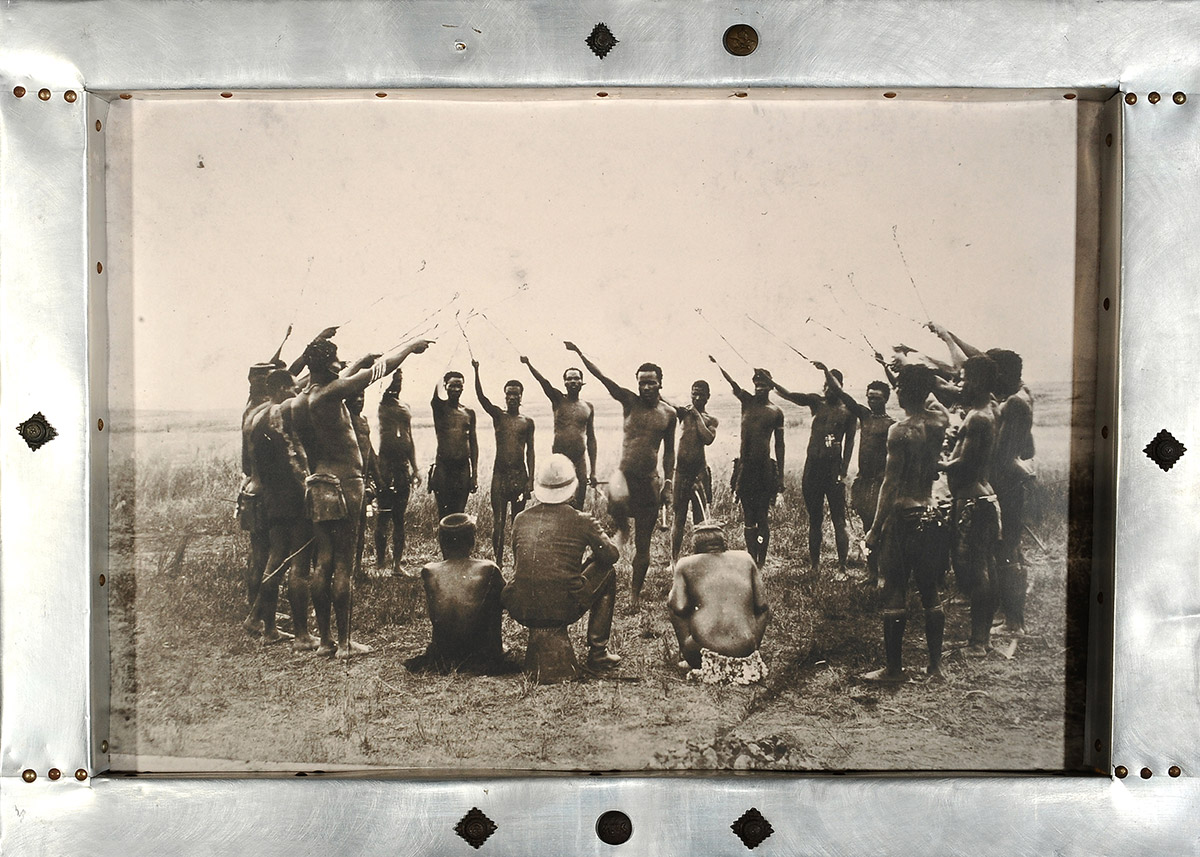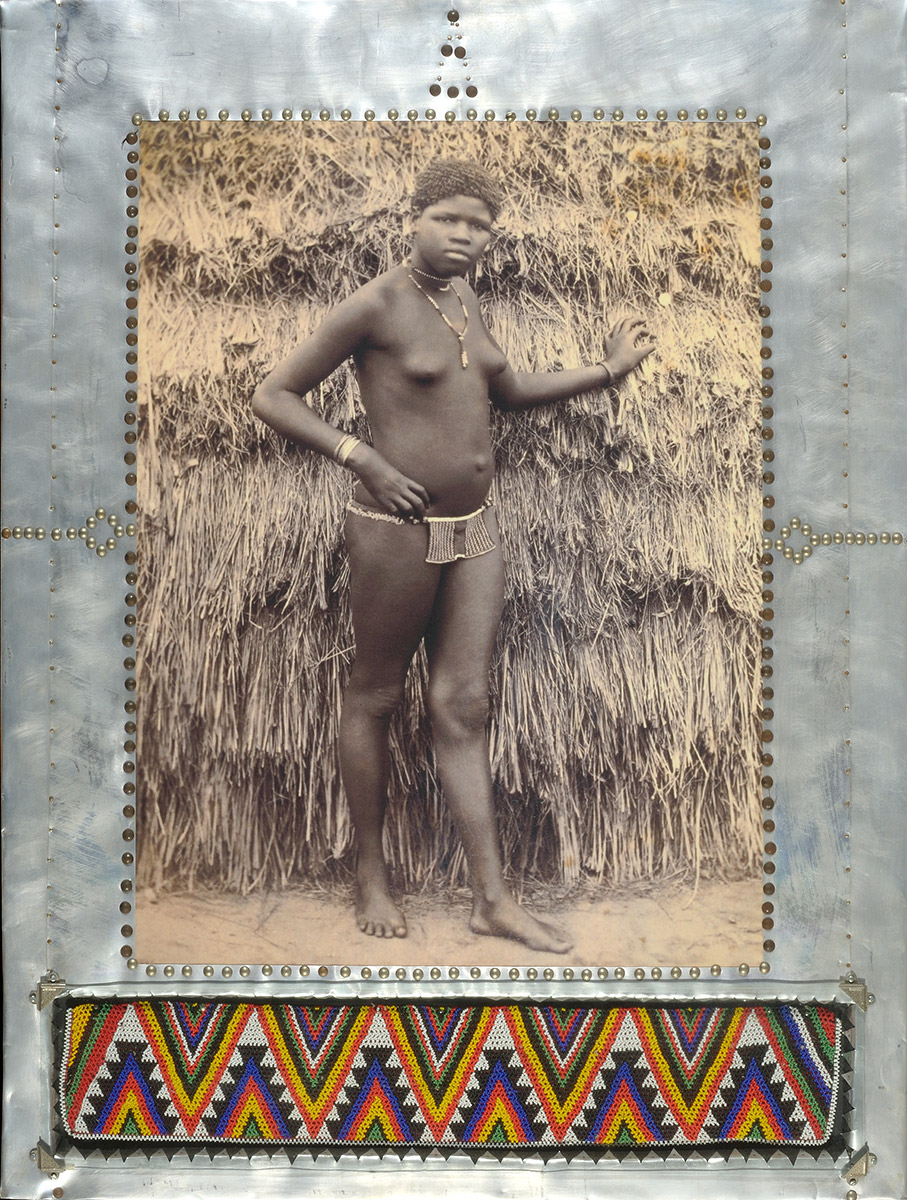Peter ENGBLOM (1956)
Zulu’s Swear Allegiance to the Queen
year unknown
Lambda print
50 x 74 cm
An archival photograph has been framed in contemporary craft materials, bringing its subject matter to life in the present, symbolically asserting that South Africa’s colonial history has a prevailing impact on contemporary life. The photograph depicts a colonial officer in his hardhat encircled by a group of Zulu men, their arms raised in a gesture of respect or salutation. Its title alludes to the absurdity of imperial power. The queen is not physically present and yet the very idea of her governs the power dynamics of this all-male gathering in a distant dominion of Empire.
Zulu Girl
year unknown
Lambda print
62 x 56 cm
An archival photograph of a young Zulu woman has been framed in contemporary pop-cultural materials, collapsing the colonial idea of the ‘tribal’ as being something archaic or a thing of the past. The brightness of the beads and the crafted frame revive the archival image, bringing it to life in the present.
BIOGRAPHY
Born on a sugar plantation in 1957, well-known Durban artist Peter Engblom was a descendant of the original Scandinavian missionaries who founded the mission station between Eshowe and Entumeni, and evangelised Zululand (KwaZulu-Natal) in the 19th century.
Engblom studied at the Bavarian State Educational Institute for Photography in Munich, Germany and at Durban University of Technology. A true maverick, his professional career spanned working as yacht broker, a professional snake catcher and a museum designer.
Possibly his best known work is the Zulu Sushi book in which he introduced audiences to the fictional character of Mpunzi Shezi who met his first artistic muse, Naokichi Nakamura, a hundred years ago and went on to become the first Zulu guru, teaching Ubuntu to the Buddhists while explaining Zen to the Zulus.
Engblom merged Zulu, Japanese and Indian elements in his work and was known for his seemingly never-ending flow of fascinating ideas. Acknowledged as a unique and provocative force, he described his work as ‘The Celestine Prophecy meets Mad Magazine’ and called his practice ‘stand-up anthropology’.
His wide repertoire ranged from designing the presentation for Durban’s winning bid to host the 25th International Architectural Congress, which he presented in Seoul in 2017 to designing the first digital touch screens for Durban’s Local History Museums and transforming the historic George Hotel in Eshowe, where he lived, into a destination which intrigued, amused and puzzled visitors. He also served as a lecturer in Photography at the Durban Institute of Technology.
He held a number of solo and group exhibitions and his work is widely represented in major and minor collections.



